DUTCH PAVILION AT THE VENICE BIENNALE
The International Celebration of Blasphemy and The Sacred is a presentation by Congolese artist collective Cercle d’Art des Travailleurs de Plantation Congolaise (CATPC) for the Dutch Pavilion at the 60th Venice Biennale.

Created in collaboration with artist Renzo Martens and curator Hicham Khalidi, The International Celebration of Blasphemy and The Sacred, a proyect by Congolese artist collective Cercle d’Art des Travailleurs de Plantation Congolaise (CATPC), highlights the group’s endeavor to reclaim the sacred forests of Lusanga, along with their broader mission of spiritual, ethical and economic reckoning. The exhibition is on display simultaneously at the Dutch Pavilion in Venice and in the White Cube in Lusanga (DRC).
For both exhibitions CATPC has created new artworks from earth taken from the last remaining patches of untouched forest surrounding the plantation; their sculptures have subsequently been cast in raw commodity materials extracted from plantations. By using these raw materials, CATPC feels that the sweat and proceeds of plantation labour are transformed from “impure stains into tools for repair”.
Ced’art Tamasala (CATPC): “The goal of the exhibition is to write a scenario in which good contaminates evil and in which problems become solutions. The stories told through these sculptures are intended to generate change as they travel the world. Each sculpture carries the seed that will bring back the Sacred Forest. Ultimately functioning as conduits, these sculptures will allow for a shared equitable future for all humans, making it possible for us to reclaim our stolen lands, to reforest them and to welcome the post-plantation and Sacred Forest.”
-
The International Celebration of Blasphemy and the Sacred, CATPC, Renzo Martens, Hicham Khalidi, 2024. Photo by Peter Tijhuis.
-
The International Celebration of Blasphemy and the Sacred, CATPC, Renzo Martens, Hicham Khalidi, 2024. Photo by Peter Tijhuis.
-
The International Celebration of Blasphemy and the Sacred, CATPC, Renzo Martens, Hicham Khalidi, 2024. Photo by Peter Tijhuis.
-
The International Celebration of Blasphemy and the Sacred, CATPC, Renzo Martens, Hicham Khalidi, 2024. Photo by Peter Tijhuis.
-
The International Celebration of Blasphemy and the Sacred, CATPC, Renzo Martens, Hicham Khalidi, 2024. Photo by Peter Tijhuis.
The sculpture Balot
Anticipating the simultaneous exhibition in Venice and Lusanga, CATPC requested the Virginia Museum of Fine Arts (VMFA) for the temporary return of Balot, a sculpture held sacred to their community that was made in 1931 to protect them against the plantation regime. VMFA confirmed the loan and Balot returned in March to its country of origin after more than 50 years. Upon its arrival in Lusanga the community reclaimed their ownership of the sculpture and control over its inherent powers through ritual and spiritual means. Only then could it be paraded and triumphantly placed in the White Cube; a museum erected in the former Unilever plantation of Lusanga in 2017. The sculpture is now on public display in the White Cube from April 20 to November 24, 2024, parallel to the Biennale di Venezia. Connected by a live stream, visitors of the Dutch Pavilion in Venice will be able to see the Balot sculpture in the White Cube.
Ced’art Tamasala (CATPC) about Balot: “We at CATPC are part of a new generation of plantation workers that is seeking, proposing and trying to find sustainable answers to the long-standing questions that are the key to the liberation of plantations. It is not enough for museums to decolonize themselves. We, the communities that live and work on the plantations that have involuntarily financed the establishment of museums, must first be able to liberate ourselves. The return of Balot focuses our energy and strengthens our cause. Ultimately, by restoring the balance and correcting past injustices, the return of Balot will allow us to continue to buy back the land that was taken from us by colonial forces, it will enable us to abolish forced and destructive monoculture and to plant, regenerate and nourish back into existence our Sacred Forests.”
-
The International Celebration of Blasphemy and the Sacred, CATPC, Renzo Martens, Hicham Khalidi, 2024. Photo by Peter Tijhuis.
-
The International Celebration of Blasphemy and the Sacred, CATPC, Renzo Martens, Hicham Khalidi, 2024. Photo by Peter Tijhuis.
-
The International Celebration of Blasphemy and the Sacred, CATPC, Renzo Martens, Hicham Khalidi, 2024. Photo by Peter Tijhuis.
-
The International Celebration of Blasphemy and the Sacred, CATPC, Renzo Martens, Hicham Khalidi, 2024. Photo by Peter Tijhuis.
-
The International Celebration of Blasphemy and the Sacred, CATPC, Renzo Martens, Hicham Khalidi, 2024. Photo by Peter Tijhuis.
The Judgement of the White Cube
In CATPC’s latest, as yet unreleased performance film The Judgement of the White Cube, the White Cube in Lusanga (and all white cube museum spaces across the world) is judged before the community. The White Cube is then sentenced to ask for forgiveness and bring back the land and the ancestral sculpture of Balot.
Related Topics
May interest you
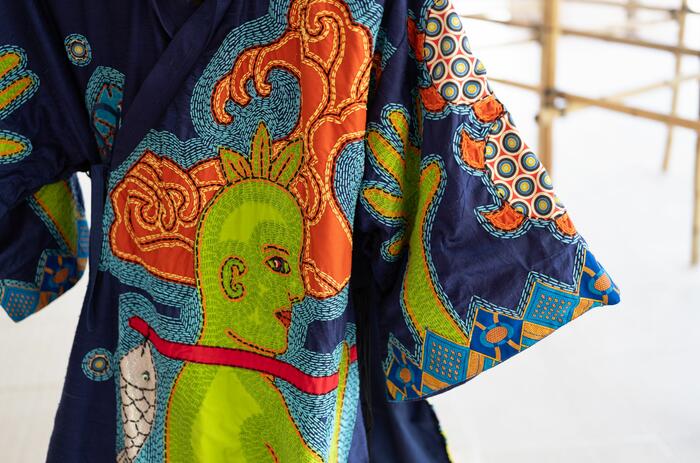
For the 60th International Art Exhibition – La Biennale di Venezia, the Nordic Countries Pavilion invites the audience to embark on a journey aboard a spectral dragon ship which occupies the light and open architecture of Sverre Fehn’s meditative masterpiece in the Giardini of the Biennale, Venice.
THE ALTERSEA OPERA: THE NORDIC COUNTRIES PAVILION'S PROPOSAL
For the 60th International Art Exhibition – La Biennale di Venezia, the Nordic Countries Pavilion invites the audience to embark on a journey aboard a spectral dragon ship which occupies the light and open architecture of Sverre Fehn’s meditative masterpiece in the Giardini of the Biennale, Venice.

For the 60th International Art Exhibition – La Biennale di Venezia, the Nordic Countries Pavilion invites the audience to embark on a journey aboard a spectral dragon ship which occupies the light and open architecture of Sverre Fehn’s meditative masterpiece in the Giardini of the Biennale, Venice.
THE ALTERSEA OPERA: THE NORDIC COUNTRIES PAVILION'S PROPOSAL
For the 60th International Art Exhibition – La Biennale di Venezia, the Nordic Countries Pavilion invites the audience to embark on a journey aboard a spectral dragon ship which occupies the light and open architecture of Sverre Fehn’s meditative masterpiece in the Giardini of the Biennale, Venice.
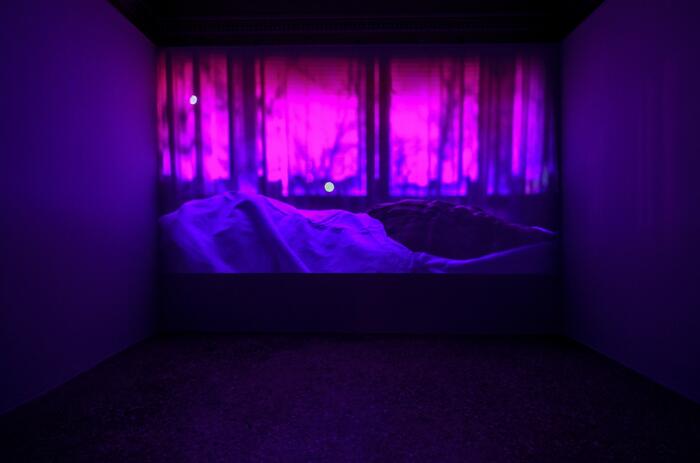
The Georgian Pavilion in the 60th Venice Biennale presented The Art of Seeing– States of Astronomy, a collaborative project presented by a team of Georgian and French curators and artists.
THE ART OF SEEING: GEORGIA’S PAVILION IN THE VENICE BIENNALE
The Georgian Pavilion in the 60th Venice Biennale presented The Art of Seeing– States of Astronomy, a collaborative project presented by a team of Georgian and French curators and artists.
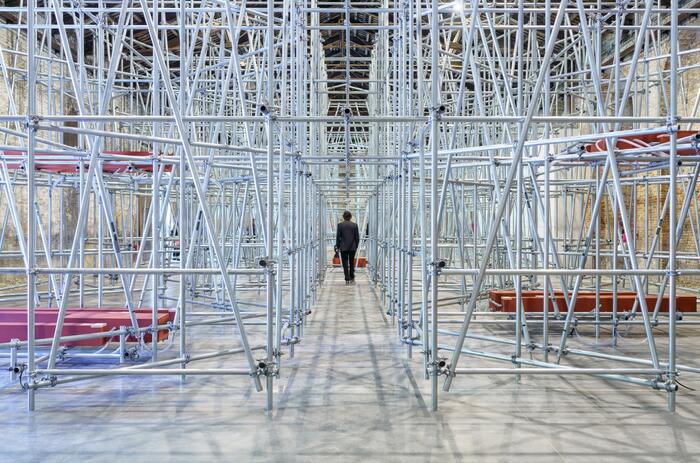
Due qui / To Hear is the project for the Italian Pavilion at the 60th Venice Biennale Curated by Luca Cerizza (with the assistance of Francesca Verga), it presents work that Massimo Bartolini has created in collaboration with several musicians (for the permanent installations) and writers (for the public program), employing the cooperative approach that is a hallmark of his practice.
DUE QUI/TO HEAR: ITALY’S PAVILION FOR THE VENICE BIENNALE
Due qui / To Hear is the project for the Italian Pavilion at the 60th Venice Biennale Curated by Luca Cerizza (with the assistance of Francesca Verga), it presents work that Massimo Bartolini has created in collaboration with several musicians (for the permanent installations) and writers (for the public program), employing the cooperative approach that is a hallmark of his practice.
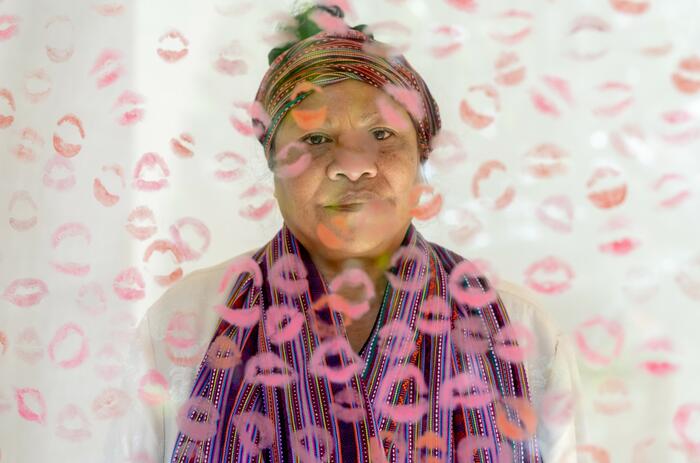
Maria Madeira is the artist representing Timor-Leste at the 60th International Venice Biennale. Timor-Leste’s inaugural pavilion coincides with the country’s 25th anniversary of independence. Commissioned by the Ministry of Youth, Sports, Arts and Culture, Democratic Republic of Timor-Leste and curated by Professor Natalie King OAM.
KISS AND DON’T TELL: TIMOR-LESTE IN THE VENICE BIENNALE
Maria Madeira is the artist representing Timor-Leste at the 60th International Venice Biennale. Timor-Leste’s inaugural pavilion coincides with the country’s 25th anniversary of independence. Commissioned by the Ministry of Youth, Sports, Arts and Culture, Democratic Republic of Timor-Leste and curated by Professor Natalie King OAM.
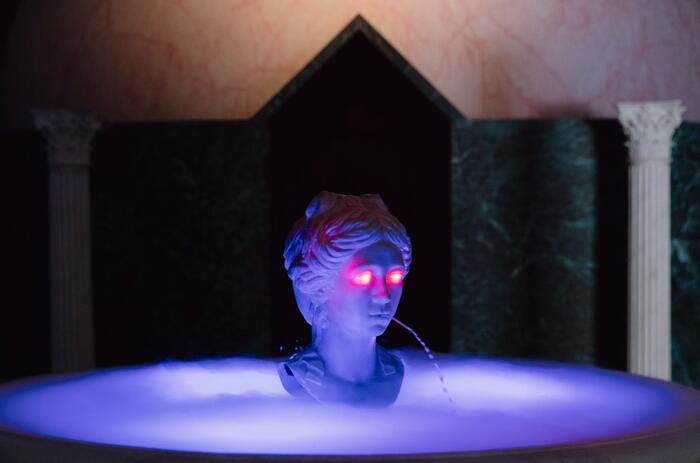
The Venice Bienanale’s Swiss Pavilion presents Super Superior Civilizations: an exhibition with the sixth and seventh chapters of Guerreiro do Divino Amor’s monumental “Superfictional World Atlas” saga: The Miracle of Helvetia and Roma Talismano. Curated by: Andrea Bellini.
THE SWISS PAVILION’S VENICE BIENNALE EXHIBITION BY GUERREIRO DO DIVINO AMOR
The Venice Bienanale’s Swiss Pavilion presents Super Superior Civilizations: an exhibition with the sixth and seventh chapters of Guerreiro do Divino Amor’s monumental “Superfictional World Atlas” saga: The Miracle of Helvetia and Roma Talismano. Curated by: Andrea Bellini.

For the 60th Venice Biennale, the Republic of Armenia presents Echo, a multi-dimensional multi-media installation project by Paris-based Armenian artist Nina Khemchyan.
“ECHO” BY NINCA KHEMCHYAN: ARMENIAN PAVILION IN THE VENICE BIENNALE
For the 60th Venice Biennale, the Republic of Armenia presents Echo, a multi-dimensional multi-media installation project by Paris-based Armenian artist Nina Khemchyan.
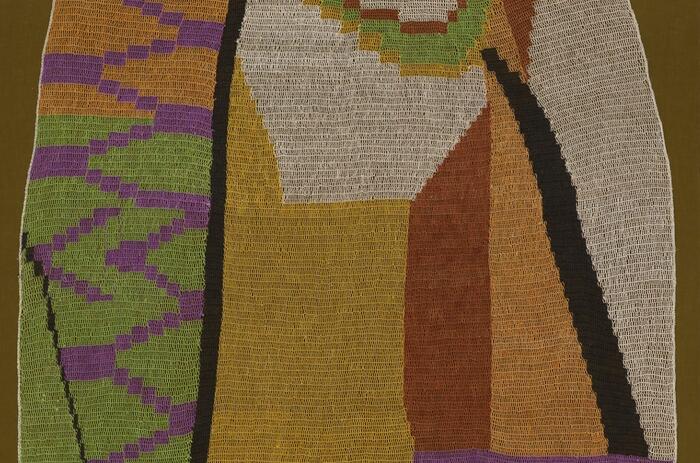
For the 60th International Exhibition of la Biennale di Venezia Stranieri Ovunque (Foregneirs Everywhere), artist Claudia Alarcón and art-collective Silät are presenting their reflections on being treated as foreigners in their own country.
CLAUDIA ALARCÓN AND SILÄT’S VENICE BIENNALE PARTICIPATION
For the 60th International Exhibition of la Biennale di Venezia Stranieri Ovunque (Foregneirs Everywhere), artist Claudia Alarcón and art-collective Silät are presenting their reflections on being treated as foreigners in their own country.
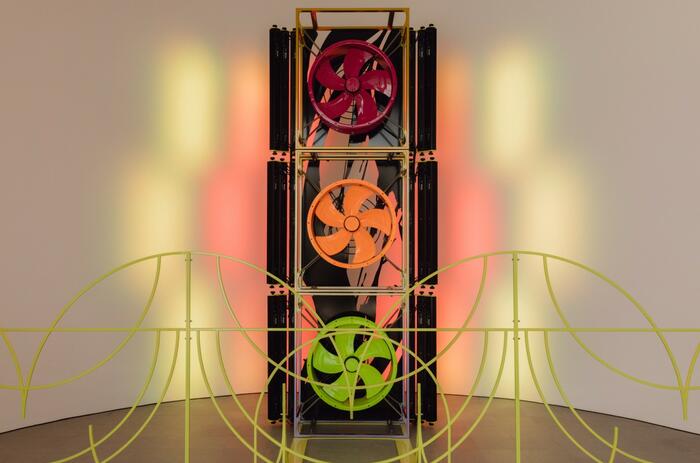
For the 60th International Venice Biennale, Nemes designed the project as an immersive, painting-based Gesamtkunstwerk that expands the genre of painting and extends it to other media. Project curated by Róna Kopeczky.
TECHNO ZEN BY MÁRTON NEMEZ: THE HUNGARIAN PAVILION IN VENICE BIENNALE
For the 60th International Venice Biennale, Nemes designed the project as an immersive, painting-based Gesamtkunstwerk that expands the genre of painting and extends it to other media. Project curated by Róna Kopeczky.
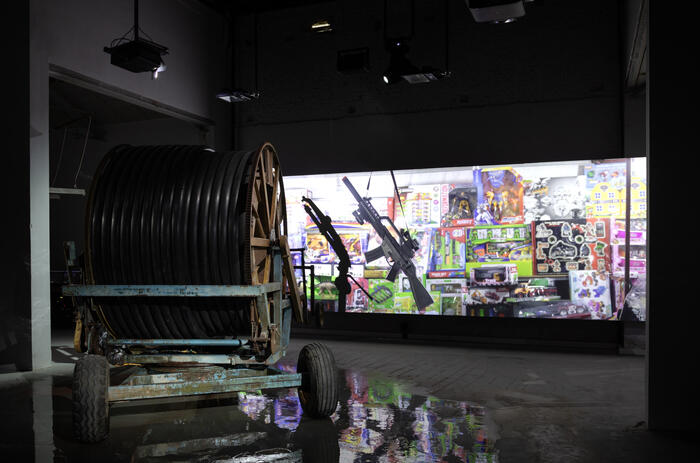
Xirómero / Dryland is an interdisciplinary collective work conceived by Thanasis Deligiannis and Yannis Michalopoulos, created along with the artists Elia Kalogianni, Yorgos Kyvernitis, Kostas Chaikalis and Fotis Sagonas for the Greek Pavilion at the 60th Venice Biennale. The project is curated by Panos Giannikopoulos.
WATER AS A PRISM: GREEK PAVILION AT THE VENICE BIENNALE
Xirómero / Dryland is an interdisciplinary collective work conceived by Thanasis Deligiannis and Yannis Michalopoulos, created along with the artists Elia Kalogianni, Yorgos Kyvernitis, Kostas Chaikalis and Fotis Sagonas for the Greek Pavilion at the 60th Venice Biennale. The project is curated by Panos Giannikopoulos.

The exhibition of the 60th edition of the Venice Biennale - Stranieri Ovunque (Foregneirs Everywhere) - curated by Brazilian Adriano Pedrosa, presents 331 artists, significantly more than the usual number. More than a third of those artists come from Latin America.
FOREIGNERS EVERYWHERE: LATIN AMERICA TAKES OVER THE VENICE BIENNALE
The exhibition of the 60th edition of the Venice Biennale - Stranieri Ovunque (Foregneirs Everywhere) - curated by Brazilian Adriano Pedrosa, presents 331 artists, significantly more than the usual number. More than a third of those artists come from Latin America.
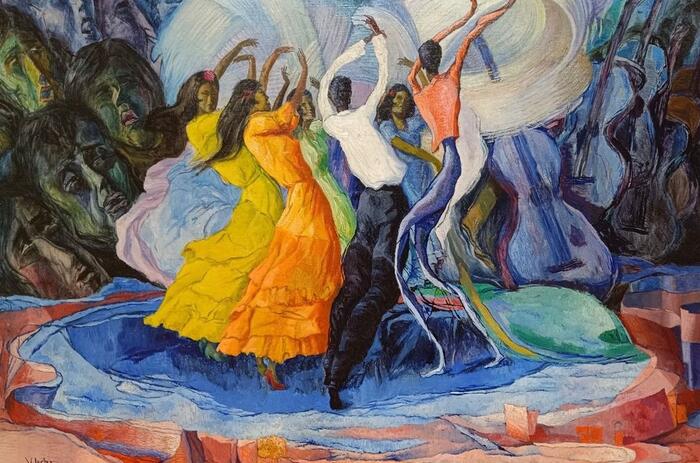
The exhibition Work, Faith and Joy at Museo Marte presents 95 works by more than 40 Salvadoran artists, and seeks to be a reflection of the country's popular culture.
WORK, FAITH AND JOY: A JOURNEY THROUGH POPULAR CULTURE
The exhibition Work, Faith and Joy at Museo Marte presents 95 works by more than 40 Salvadoran artists, and seeks to be a reflection of the country's popular culture.

For the 60th International Art Exhibition – La Biennale di Venezia, the Nordic Countries Pavilion invites the audience to embark on a journey aboard a spectral dragon ship which occupies the light and open architecture of Sverre Fehn’s meditative masterpiece in the Giardini of the Biennale, Venice.
THE ALTERSEA OPERA: THE NORDIC COUNTRIES PAVILION'S PROPOSAL
For the 60th International Art Exhibition – La Biennale di Venezia, the Nordic Countries Pavilion invites the audience to embark on a journey aboard a spectral dragon ship which occupies the light and open architecture of Sverre Fehn’s meditative masterpiece in the Giardini of the Biennale, Venice.

The Georgian Pavilion in the 60th Venice Biennale presented The Art of Seeing– States of Astronomy, a collaborative project presented by a team of Georgian and French curators and artists.
THE ART OF SEEING: GEORGIA’S PAVILION IN THE VENICE BIENNALE
The Georgian Pavilion in the 60th Venice Biennale presented The Art of Seeing– States of Astronomy, a collaborative project presented by a team of Georgian and French curators and artists.

Due qui / To Hear is the project for the Italian Pavilion at the 60th Venice Biennale Curated by Luca Cerizza (with the assistance of Francesca Verga), it presents work that Massimo Bartolini has created in collaboration with several musicians (for the permanent installations) and writers (for the public program), employing the cooperative approach that is a hallmark of his practice.
DUE QUI/TO HEAR: ITALY’S PAVILION FOR THE VENICE BIENNALE
Due qui / To Hear is the project for the Italian Pavilion at the 60th Venice Biennale Curated by Luca Cerizza (with the assistance of Francesca Verga), it presents work that Massimo Bartolini has created in collaboration with several musicians (for the permanent installations) and writers (for the public program), employing the cooperative approach that is a hallmark of his practice.

Maria Madeira is the artist representing Timor-Leste at the 60th International Venice Biennale. Timor-Leste’s inaugural pavilion coincides with the country’s 25th anniversary of independence. Commissioned by the Ministry of Youth, Sports, Arts and Culture, Democratic Republic of Timor-Leste and curated by Professor Natalie King OAM.
KISS AND DON’T TELL: TIMOR-LESTE IN THE VENICE BIENNALE
Maria Madeira is the artist representing Timor-Leste at the 60th International Venice Biennale. Timor-Leste’s inaugural pavilion coincides with the country’s 25th anniversary of independence. Commissioned by the Ministry of Youth, Sports, Arts and Culture, Democratic Republic of Timor-Leste and curated by Professor Natalie King OAM.

The Venice Bienanale’s Swiss Pavilion presents Super Superior Civilizations: an exhibition with the sixth and seventh chapters of Guerreiro do Divino Amor’s monumental “Superfictional World Atlas” saga: The Miracle of Helvetia and Roma Talismano. Curated by: Andrea Bellini.
THE SWISS PAVILION’S VENICE BIENNALE EXHIBITION BY GUERREIRO DO DIVINO AMOR
The Venice Bienanale’s Swiss Pavilion presents Super Superior Civilizations: an exhibition with the sixth and seventh chapters of Guerreiro do Divino Amor’s monumental “Superfictional World Atlas” saga: The Miracle of Helvetia and Roma Talismano. Curated by: Andrea Bellini.

For the 60th Venice Biennale, the Republic of Armenia presents Echo, a multi-dimensional multi-media installation project by Paris-based Armenian artist Nina Khemchyan.
“ECHO” BY NINCA KHEMCHYAN: ARMENIAN PAVILION IN THE VENICE BIENNALE
For the 60th Venice Biennale, the Republic of Armenia presents Echo, a multi-dimensional multi-media installation project by Paris-based Armenian artist Nina Khemchyan.

For the 60th International Exhibition of la Biennale di Venezia Stranieri Ovunque (Foregneirs Everywhere), artist Claudia Alarcón and art-collective Silät are presenting their reflections on being treated as foreigners in their own country.
CLAUDIA ALARCÓN AND SILÄT’S VENICE BIENNALE PARTICIPATION
For the 60th International Exhibition of la Biennale di Venezia Stranieri Ovunque (Foregneirs Everywhere), artist Claudia Alarcón and art-collective Silät are presenting their reflections on being treated as foreigners in their own country.

For the 60th International Venice Biennale, Nemes designed the project as an immersive, painting-based Gesamtkunstwerk that expands the genre of painting and extends it to other media. Project curated by Róna Kopeczky.
TECHNO ZEN BY MÁRTON NEMEZ: THE HUNGARIAN PAVILION IN VENICE BIENNALE
For the 60th International Venice Biennale, Nemes designed the project as an immersive, painting-based Gesamtkunstwerk that expands the genre of painting and extends it to other media. Project curated by Róna Kopeczky.

Xirómero / Dryland is an interdisciplinary collective work conceived by Thanasis Deligiannis and Yannis Michalopoulos, created along with the artists Elia Kalogianni, Yorgos Kyvernitis, Kostas Chaikalis and Fotis Sagonas for the Greek Pavilion at the 60th Venice Biennale. The project is curated by Panos Giannikopoulos.
WATER AS A PRISM: GREEK PAVILION AT THE VENICE BIENNALE
Xirómero / Dryland is an interdisciplinary collective work conceived by Thanasis Deligiannis and Yannis Michalopoulos, created along with the artists Elia Kalogianni, Yorgos Kyvernitis, Kostas Chaikalis and Fotis Sagonas for the Greek Pavilion at the 60th Venice Biennale. The project is curated by Panos Giannikopoulos.

The exhibition of the 60th edition of the Venice Biennale - Stranieri Ovunque (Foregneirs Everywhere) - curated by Brazilian Adriano Pedrosa, presents 331 artists, significantly more than the usual number. More than a third of those artists come from Latin America.
FOREIGNERS EVERYWHERE: LATIN AMERICA TAKES OVER THE VENICE BIENNALE
The exhibition of the 60th edition of the Venice Biennale - Stranieri Ovunque (Foregneirs Everywhere) - curated by Brazilian Adriano Pedrosa, presents 331 artists, significantly more than the usual number. More than a third of those artists come from Latin America.

The exhibition Work, Faith and Joy at Museo Marte presents 95 works by more than 40 Salvadoran artists, and seeks to be a reflection of the country's popular culture.
WORK, FAITH AND JOY: A JOURNEY THROUGH POPULAR CULTURE
The exhibition Work, Faith and Joy at Museo Marte presents 95 works by more than 40 Salvadoran artists, and seeks to be a reflection of the country's popular culture.

For the 60th International Art Exhibition – La Biennale di Venezia, the Nordic Countries Pavilion invites the audience to embark on a journey aboard a spectral dragon ship which occupies the light and open architecture of Sverre Fehn’s meditative masterpiece in the Giardini of the Biennale, Venice.
THE ALTERSEA OPERA: THE NORDIC COUNTRIES PAVILION'S PROPOSAL
For the 60th International Art Exhibition – La Biennale di Venezia, the Nordic Countries Pavilion invites the audience to embark on a journey aboard a spectral dragon ship which occupies the light and open architecture of Sverre Fehn’s meditative masterpiece in the Giardini of the Biennale, Venice.

The Georgian Pavilion in the 60th Venice Biennale presented The Art of Seeing– States of Astronomy, a collaborative project presented by a team of Georgian and French curators and artists.
THE ART OF SEEING: GEORGIA’S PAVILION IN THE VENICE BIENNALE
The Georgian Pavilion in the 60th Venice Biennale presented The Art of Seeing– States of Astronomy, a collaborative project presented by a team of Georgian and French curators and artists.

Due qui / To Hear is the project for the Italian Pavilion at the 60th Venice Biennale Curated by Luca Cerizza (with the assistance of Francesca Verga), it presents work that Massimo Bartolini has created in collaboration with several musicians (for the permanent installations) and writers (for the public program), employing the cooperative approach that is a hallmark of his practice.
DUE QUI/TO HEAR: ITALY’S PAVILION FOR THE VENICE BIENNALE
Due qui / To Hear is the project for the Italian Pavilion at the 60th Venice Biennale Curated by Luca Cerizza (with the assistance of Francesca Verga), it presents work that Massimo Bartolini has created in collaboration with several musicians (for the permanent installations) and writers (for the public program), employing the cooperative approach that is a hallmark of his practice.

Maria Madeira is the artist representing Timor-Leste at the 60th International Venice Biennale. Timor-Leste’s inaugural pavilion coincides with the country’s 25th anniversary of independence. Commissioned by the Ministry of Youth, Sports, Arts and Culture, Democratic Republic of Timor-Leste and curated by Professor Natalie King OAM.
KISS AND DON’T TELL: TIMOR-LESTE IN THE VENICE BIENNALE
Maria Madeira is the artist representing Timor-Leste at the 60th International Venice Biennale. Timor-Leste’s inaugural pavilion coincides with the country’s 25th anniversary of independence. Commissioned by the Ministry of Youth, Sports, Arts and Culture, Democratic Republic of Timor-Leste and curated by Professor Natalie King OAM.

The Venice Bienanale’s Swiss Pavilion presents Super Superior Civilizations: an exhibition with the sixth and seventh chapters of Guerreiro do Divino Amor’s monumental “Superfictional World Atlas” saga: The Miracle of Helvetia and Roma Talismano. Curated by: Andrea Bellini.
THE SWISS PAVILION’S VENICE BIENNALE EXHIBITION BY GUERREIRO DO DIVINO AMOR
The Venice Bienanale’s Swiss Pavilion presents Super Superior Civilizations: an exhibition with the sixth and seventh chapters of Guerreiro do Divino Amor’s monumental “Superfictional World Atlas” saga: The Miracle of Helvetia and Roma Talismano. Curated by: Andrea Bellini.

For the 60th Venice Biennale, the Republic of Armenia presents Echo, a multi-dimensional multi-media installation project by Paris-based Armenian artist Nina Khemchyan.
“ECHO” BY NINCA KHEMCHYAN: ARMENIAN PAVILION IN THE VENICE BIENNALE
For the 60th Venice Biennale, the Republic of Armenia presents Echo, a multi-dimensional multi-media installation project by Paris-based Armenian artist Nina Khemchyan.

For the 60th International Exhibition of la Biennale di Venezia Stranieri Ovunque (Foregneirs Everywhere), artist Claudia Alarcón and art-collective Silät are presenting their reflections on being treated as foreigners in their own country.
CLAUDIA ALARCÓN AND SILÄT’S VENICE BIENNALE PARTICIPATION
For the 60th International Exhibition of la Biennale di Venezia Stranieri Ovunque (Foregneirs Everywhere), artist Claudia Alarcón and art-collective Silät are presenting their reflections on being treated as foreigners in their own country.

For the 60th International Venice Biennale, Nemes designed the project as an immersive, painting-based Gesamtkunstwerk that expands the genre of painting and extends it to other media. Project curated by Róna Kopeczky.
TECHNO ZEN BY MÁRTON NEMEZ: THE HUNGARIAN PAVILION IN VENICE BIENNALE
For the 60th International Venice Biennale, Nemes designed the project as an immersive, painting-based Gesamtkunstwerk that expands the genre of painting and extends it to other media. Project curated by Róna Kopeczky.

Xirómero / Dryland is an interdisciplinary collective work conceived by Thanasis Deligiannis and Yannis Michalopoulos, created along with the artists Elia Kalogianni, Yorgos Kyvernitis, Kostas Chaikalis and Fotis Sagonas for the Greek Pavilion at the 60th Venice Biennale. The project is curated by Panos Giannikopoulos.
WATER AS A PRISM: GREEK PAVILION AT THE VENICE BIENNALE
Xirómero / Dryland is an interdisciplinary collective work conceived by Thanasis Deligiannis and Yannis Michalopoulos, created along with the artists Elia Kalogianni, Yorgos Kyvernitis, Kostas Chaikalis and Fotis Sagonas for the Greek Pavilion at the 60th Venice Biennale. The project is curated by Panos Giannikopoulos.

The exhibition of the 60th edition of the Venice Biennale - Stranieri Ovunque (Foregneirs Everywhere) - curated by Brazilian Adriano Pedrosa, presents 331 artists, significantly more than the usual number. More than a third of those artists come from Latin America.
FOREIGNERS EVERYWHERE: LATIN AMERICA TAKES OVER THE VENICE BIENNALE
The exhibition of the 60th edition of the Venice Biennale - Stranieri Ovunque (Foregneirs Everywhere) - curated by Brazilian Adriano Pedrosa, presents 331 artists, significantly more than the usual number. More than a third of those artists come from Latin America.

The exhibition Work, Faith and Joy at Museo Marte presents 95 works by more than 40 Salvadoran artists, and seeks to be a reflection of the country's popular culture.
WORK, FAITH AND JOY: A JOURNEY THROUGH POPULAR CULTURE
The exhibition Work, Faith and Joy at Museo Marte presents 95 works by more than 40 Salvadoran artists, and seeks to be a reflection of the country's popular culture.

For the 60th International Art Exhibition – La Biennale di Venezia, the Nordic Countries Pavilion invites the audience to embark on a journey aboard a spectral dragon ship which occupies the light and open architecture of Sverre Fehn’s meditative masterpiece in the Giardini of the Biennale, Venice.
THE ALTERSEA OPERA: THE NORDIC COUNTRIES PAVILION'S PROPOSAL
For the 60th International Art Exhibition – La Biennale di Venezia, the Nordic Countries Pavilion invites the audience to embark on a journey aboard a spectral dragon ship which occupies the light and open architecture of Sverre Fehn’s meditative masterpiece in the Giardini of the Biennale, Venice.

The Georgian Pavilion in the 60th Venice Biennale presented The Art of Seeing– States of Astronomy, a collaborative project presented by a team of Georgian and French curators and artists.
THE ART OF SEEING: GEORGIA’S PAVILION IN THE VENICE BIENNALE
The Georgian Pavilion in the 60th Venice Biennale presented The Art of Seeing– States of Astronomy, a collaborative project presented by a team of Georgian and French curators and artists.

Due qui / To Hear is the project for the Italian Pavilion at the 60th Venice Biennale Curated by Luca Cerizza (with the assistance of Francesca Verga), it presents work that Massimo Bartolini has created in collaboration with several musicians (for the permanent installations) and writers (for the public program), employing the cooperative approach that is a hallmark of his practice.
DUE QUI/TO HEAR: ITALY’S PAVILION FOR THE VENICE BIENNALE
Due qui / To Hear is the project for the Italian Pavilion at the 60th Venice Biennale Curated by Luca Cerizza (with the assistance of Francesca Verga), it presents work that Massimo Bartolini has created in collaboration with several musicians (for the permanent installations) and writers (for the public program), employing the cooperative approach that is a hallmark of his practice.

Maria Madeira is the artist representing Timor-Leste at the 60th International Venice Biennale. Timor-Leste’s inaugural pavilion coincides with the country’s 25th anniversary of independence. Commissioned by the Ministry of Youth, Sports, Arts and Culture, Democratic Republic of Timor-Leste and curated by Professor Natalie King OAM.
KISS AND DON’T TELL: TIMOR-LESTE IN THE VENICE BIENNALE
Maria Madeira is the artist representing Timor-Leste at the 60th International Venice Biennale. Timor-Leste’s inaugural pavilion coincides with the country’s 25th anniversary of independence. Commissioned by the Ministry of Youth, Sports, Arts and Culture, Democratic Republic of Timor-Leste and curated by Professor Natalie King OAM.

The Venice Bienanale’s Swiss Pavilion presents Super Superior Civilizations: an exhibition with the sixth and seventh chapters of Guerreiro do Divino Amor’s monumental “Superfictional World Atlas” saga: The Miracle of Helvetia and Roma Talismano. Curated by: Andrea Bellini.
THE SWISS PAVILION’S VENICE BIENNALE EXHIBITION BY GUERREIRO DO DIVINO AMOR
The Venice Bienanale’s Swiss Pavilion presents Super Superior Civilizations: an exhibition with the sixth and seventh chapters of Guerreiro do Divino Amor’s monumental “Superfictional World Atlas” saga: The Miracle of Helvetia and Roma Talismano. Curated by: Andrea Bellini.

For the 60th Venice Biennale, the Republic of Armenia presents Echo, a multi-dimensional multi-media installation project by Paris-based Armenian artist Nina Khemchyan.
“ECHO” BY NINCA KHEMCHYAN: ARMENIAN PAVILION IN THE VENICE BIENNALE
For the 60th Venice Biennale, the Republic of Armenia presents Echo, a multi-dimensional multi-media installation project by Paris-based Armenian artist Nina Khemchyan.

For the 60th International Exhibition of la Biennale di Venezia Stranieri Ovunque (Foregneirs Everywhere), artist Claudia Alarcón and art-collective Silät are presenting their reflections on being treated as foreigners in their own country.
CLAUDIA ALARCÓN AND SILÄT’S VENICE BIENNALE PARTICIPATION
For the 60th International Exhibition of la Biennale di Venezia Stranieri Ovunque (Foregneirs Everywhere), artist Claudia Alarcón and art-collective Silät are presenting their reflections on being treated as foreigners in their own country.

For the 60th International Venice Biennale, Nemes designed the project as an immersive, painting-based Gesamtkunstwerk that expands the genre of painting and extends it to other media. Project curated by Róna Kopeczky.
TECHNO ZEN BY MÁRTON NEMEZ: THE HUNGARIAN PAVILION IN VENICE BIENNALE
For the 60th International Venice Biennale, Nemes designed the project as an immersive, painting-based Gesamtkunstwerk that expands the genre of painting and extends it to other media. Project curated by Róna Kopeczky.

Xirómero / Dryland is an interdisciplinary collective work conceived by Thanasis Deligiannis and Yannis Michalopoulos, created along with the artists Elia Kalogianni, Yorgos Kyvernitis, Kostas Chaikalis and Fotis Sagonas for the Greek Pavilion at the 60th Venice Biennale. The project is curated by Panos Giannikopoulos.
WATER AS A PRISM: GREEK PAVILION AT THE VENICE BIENNALE
Xirómero / Dryland is an interdisciplinary collective work conceived by Thanasis Deligiannis and Yannis Michalopoulos, created along with the artists Elia Kalogianni, Yorgos Kyvernitis, Kostas Chaikalis and Fotis Sagonas for the Greek Pavilion at the 60th Venice Biennale. The project is curated by Panos Giannikopoulos.

The exhibition of the 60th edition of the Venice Biennale - Stranieri Ovunque (Foregneirs Everywhere) - curated by Brazilian Adriano Pedrosa, presents 331 artists, significantly more than the usual number. More than a third of those artists come from Latin America.
FOREIGNERS EVERYWHERE: LATIN AMERICA TAKES OVER THE VENICE BIENNALE
The exhibition of the 60th edition of the Venice Biennale - Stranieri Ovunque (Foregneirs Everywhere) - curated by Brazilian Adriano Pedrosa, presents 331 artists, significantly more than the usual number. More than a third of those artists come from Latin America.

The exhibition Work, Faith and Joy at Museo Marte presents 95 works by more than 40 Salvadoran artists, and seeks to be a reflection of the country's popular culture.
WORK, FAITH AND JOY: A JOURNEY THROUGH POPULAR CULTURE
The exhibition Work, Faith and Joy at Museo Marte presents 95 works by more than 40 Salvadoran artists, and seeks to be a reflection of the country's popular culture.

For the 60th International Art Exhibition – La Biennale di Venezia, the Nordic Countries Pavilion invites the audience to embark on a journey aboard a spectral dragon ship which occupies the light and open architecture of Sverre Fehn’s meditative masterpiece in the Giardini of the Biennale, Venice.
THE ALTERSEA OPERA: THE NORDIC COUNTRIES PAVILION'S PROPOSAL
For the 60th International Art Exhibition – La Biennale di Venezia, the Nordic Countries Pavilion invites the audience to embark on a journey aboard a spectral dragon ship which occupies the light and open architecture of Sverre Fehn’s meditative masterpiece in the Giardini of the Biennale, Venice.

The Georgian Pavilion in the 60th Venice Biennale presented The Art of Seeing– States of Astronomy, a collaborative project presented by a team of Georgian and French curators and artists.
THE ART OF SEEING: GEORGIA’S PAVILION IN THE VENICE BIENNALE
The Georgian Pavilion in the 60th Venice Biennale presented The Art of Seeing– States of Astronomy, a collaborative project presented by a team of Georgian and French curators and artists.

Due qui / To Hear is the project for the Italian Pavilion at the 60th Venice Biennale Curated by Luca Cerizza (with the assistance of Francesca Verga), it presents work that Massimo Bartolini has created in collaboration with several musicians (for the permanent installations) and writers (for the public program), employing the cooperative approach that is a hallmark of his practice.
DUE QUI/TO HEAR: ITALY’S PAVILION FOR THE VENICE BIENNALE
Due qui / To Hear is the project for the Italian Pavilion at the 60th Venice Biennale Curated by Luca Cerizza (with the assistance of Francesca Verga), it presents work that Massimo Bartolini has created in collaboration with several musicians (for the permanent installations) and writers (for the public program), employing the cooperative approach that is a hallmark of his practice.

Maria Madeira is the artist representing Timor-Leste at the 60th International Venice Biennale. Timor-Leste’s inaugural pavilion coincides with the country’s 25th anniversary of independence. Commissioned by the Ministry of Youth, Sports, Arts and Culture, Democratic Republic of Timor-Leste and curated by Professor Natalie King OAM.
KISS AND DON’T TELL: TIMOR-LESTE IN THE VENICE BIENNALE
Maria Madeira is the artist representing Timor-Leste at the 60th International Venice Biennale. Timor-Leste’s inaugural pavilion coincides with the country’s 25th anniversary of independence. Commissioned by the Ministry of Youth, Sports, Arts and Culture, Democratic Republic of Timor-Leste and curated by Professor Natalie King OAM.

The Venice Bienanale’s Swiss Pavilion presents Super Superior Civilizations: an exhibition with the sixth and seventh chapters of Guerreiro do Divino Amor’s monumental “Superfictional World Atlas” saga: The Miracle of Helvetia and Roma Talismano. Curated by: Andrea Bellini.
THE SWISS PAVILION’S VENICE BIENNALE EXHIBITION BY GUERREIRO DO DIVINO AMOR
The Venice Bienanale’s Swiss Pavilion presents Super Superior Civilizations: an exhibition with the sixth and seventh chapters of Guerreiro do Divino Amor’s monumental “Superfictional World Atlas” saga: The Miracle of Helvetia and Roma Talismano. Curated by: Andrea Bellini.

For the 60th Venice Biennale, the Republic of Armenia presents Echo, a multi-dimensional multi-media installation project by Paris-based Armenian artist Nina Khemchyan.
“ECHO” BY NINCA KHEMCHYAN: ARMENIAN PAVILION IN THE VENICE BIENNALE
For the 60th Venice Biennale, the Republic of Armenia presents Echo, a multi-dimensional multi-media installation project by Paris-based Armenian artist Nina Khemchyan.

For the 60th International Exhibition of la Biennale di Venezia Stranieri Ovunque (Foregneirs Everywhere), artist Claudia Alarcón and art-collective Silät are presenting their reflections on being treated as foreigners in their own country.
CLAUDIA ALARCÓN AND SILÄT’S VENICE BIENNALE PARTICIPATION
For the 60th International Exhibition of la Biennale di Venezia Stranieri Ovunque (Foregneirs Everywhere), artist Claudia Alarcón and art-collective Silät are presenting their reflections on being treated as foreigners in their own country.

For the 60th International Venice Biennale, Nemes designed the project as an immersive, painting-based Gesamtkunstwerk that expands the genre of painting and extends it to other media. Project curated by Róna Kopeczky.
TECHNO ZEN BY MÁRTON NEMEZ: THE HUNGARIAN PAVILION IN VENICE BIENNALE
For the 60th International Venice Biennale, Nemes designed the project as an immersive, painting-based Gesamtkunstwerk that expands the genre of painting and extends it to other media. Project curated by Róna Kopeczky.

Xirómero / Dryland is an interdisciplinary collective work conceived by Thanasis Deligiannis and Yannis Michalopoulos, created along with the artists Elia Kalogianni, Yorgos Kyvernitis, Kostas Chaikalis and Fotis Sagonas for the Greek Pavilion at the 60th Venice Biennale. The project is curated by Panos Giannikopoulos.
WATER AS A PRISM: GREEK PAVILION AT THE VENICE BIENNALE
Xirómero / Dryland is an interdisciplinary collective work conceived by Thanasis Deligiannis and Yannis Michalopoulos, created along with the artists Elia Kalogianni, Yorgos Kyvernitis, Kostas Chaikalis and Fotis Sagonas for the Greek Pavilion at the 60th Venice Biennale. The project is curated by Panos Giannikopoulos.

The exhibition of the 60th edition of the Venice Biennale - Stranieri Ovunque (Foregneirs Everywhere) - curated by Brazilian Adriano Pedrosa, presents 331 artists, significantly more than the usual number. More than a third of those artists come from Latin America.
FOREIGNERS EVERYWHERE: LATIN AMERICA TAKES OVER THE VENICE BIENNALE
The exhibition of the 60th edition of the Venice Biennale - Stranieri Ovunque (Foregneirs Everywhere) - curated by Brazilian Adriano Pedrosa, presents 331 artists, significantly more than the usual number. More than a third of those artists come from Latin America.

The exhibition Work, Faith and Joy at Museo Marte presents 95 works by more than 40 Salvadoran artists, and seeks to be a reflection of the country's popular culture.
WORK, FAITH AND JOY: A JOURNEY THROUGH POPULAR CULTURE
The exhibition Work, Faith and Joy at Museo Marte presents 95 works by more than 40 Salvadoran artists, and seeks to be a reflection of the country's popular culture.




